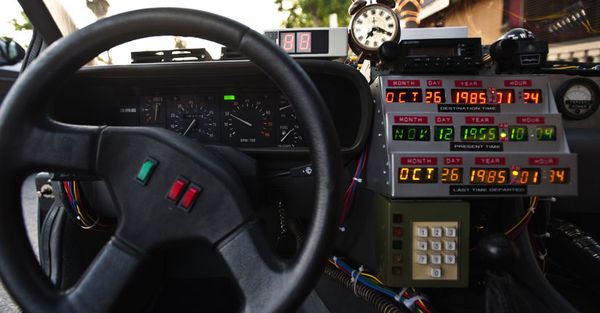
Key Takeaways
- Flying westward around the Earth's equator at over 1,000 miles (1,600 kilometers) per hour allows you to chase noon around the world, keeping the time on your watch between 12:00 noon and 1:00 p.m. as long as you maintain speed and direction.
- This phenomenon occurs because you're moving at the same speed as the Earth's rotation, but in the opposite direction, making the sun stay in the same part of the sky relative to the plane.
- Although the time of day would seem to stand still, the date would still change as you cross the International Date Line, showing that time continues to progress even if you keep the sun overhead.
Let's say you are in plane flying westward around the Earth's equator. At the equator, the time zones are a little over 1,000 miles (1,609 km) apart, so to cross one every hour, your plane would have to fly at over 1,000 miles per hour (1,609 kph).
If you started flying at 12:00 noon, at 1:00 p.m. (according to your watch) you would cross a time zone, making it 12:00 noon again. This process would continue for as long as your plane could stay in the air: As soon as your watch passed 12:59, you'd have to turn it back to 12:00 again. For your entire westward trip around the Earth, the time would be between 12:00 noon and 1:00 p.m.
Advertisement
What you are really doing is maintaining your position on the Earth relative to the sun. You are flying at the same speed as the Earth is rotating, but in the opposite direction, so the sun is always in the same part of the sky. We know that at noon the sun is approximately overhead, so on this journey the sun would always be over the plane. In effect, you are chasing noon around the world. If you prefer sunsets, you could watch a perpetual sunset by departing on your westward journey just as the sun is setting.
What if your plane could stay in the air for days, or even weeks? Would you stand still in time forever? The answer is that the time of day would always be the same, but the date would continue to change. The time would always be between 12:00 noon and 1:00 p.m., but each time you crossed the International Date Line, it would instantly become 12:00 noon the next day.
The International Date Line runs from the North Pole to the South Pole, through the Pacific Ocean. It is on the opposite side of the world from the Prime Meridian (which is in Greenwich, England).
Before the establishment of the International Date Line, Portuguese explorer Ferdinand Magellan, who was the first to circumnavigate the Earth, found that when he arrived back, he was one full day behind. His crew had kept careful track of each day in their journals, and it turned out that over the course of the almost-three-year voyage, they had seen one less sunrise and sunset than those on land.
Advertisement

